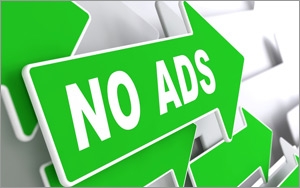 The
advent of browser-based ad-blocking software could bring a new surge of micropayments and paywalls for publishers.
The
advent of browser-based ad-blocking software could bring a new surge of micropayments and paywalls for publishers.
As brands and their agency partners scramble to circumvent being discarded
into the no-serve pile, one startup developed a token system to monetize content.
HelloToken CEO and cofounder Brian Truong thinks tokens can fill the void for publishers as ad blocking
becomes more prevalent on desktop and mobile, especially with the Apple iOS9 update expected mid September.
The platform can monetize content allowing publishers to make 10 times more than ads
by giving readers a chance to answer a simple survey question instead of paying for content.
About 60 publishers use HelloToken today. For every question answered on their site, publishers
earn 3 cents -- the amount chosen because it is 10 times what publishers typically make for online display ads, which have an average CPM of $3 or one-third of a cent per impression, he says.
"Readers are aware that publishers need to make money; it's mostly a matter of delivering something that they actually like," Truong says.
Much of the ad blocking today, "single
percentages," on AccuWeather's network of desktop sites occurs in Greece, Poland and other Eastern European countries, says Steve Smith, president of digital at AccuWeather. "We are concerned and
interested in those monitoring ad blocking on mobile," he says.
"The bigger issues will come when Apple releases iOS 9" mid September because AccuWeather gets up to 37 million monthly unique
visitors in the U.S. from mobile vs. eight-to-10 million on desktop.
Smith says native ads, which complement content, will become one way for advertising to get around ad-blocking software.
Intently's ad blocking software replaces advertisements with content users want to see. Users create their own channel or they can subscribe to other user channels, explains Micha
Mikailian, founder of Intently. "I believe in the ecosystem of advertising, and I think they feel they're being threatened by ad blockers," he says. "Ad blockers need to connect people with
content they want to see."
Jonathan Opdyke, HookLogic CEO, says some see the impetus of ad blocking as "advertising abuse," and thinks merchandising or product placement could become the
workaround. "Paid product placement in a movie becomes part of a scene in a movie," he says. "Why did the scene have a Coke can rather than a Pepsi?"
Interestingly, HookLogic's model -- more
of merchandising or paid placement on retail sites -- bypasses ad blocking because the advertising content gets built into the page, looking similar to native advertising. It fits into the product
grids as part of the shopping experience, similar to adMarketplace. The ads don't get tagged as ads by the browser.
Similar to the way brand Web sites have required consumers to turn on
cookie-tracking features on their mobile device before entering their site from an email promotion, publishers like The Washington Post are fighting back against an onslaught of online ad
blockers by redirecting site visitor to a free trial subscription, per one report.
As Apple CEO Tim Cook said during the company's developer conference Wednesday, apps are the future of television. Apps are also the future, if the advertising industry has its way.
Apple
also said the newest edition of its mobile operating software, iOS 9, will block ads in Safari. Until the release in mid-September, ad blocking remains an add-on browser tool like Adblock Plus and
others for those who prefer to see fewer online advertisements.
Some believe the latest version of Apple's mobile operating system will lead consumer toward apps that allow companies to
capitalize on the content blocking architecture allowing developers to release ad-blocking extensions for download by users. "Content Blocking gives your extensions a fast and efficient way to
block cookies, images, resources, pop-ups, and other content," explains Apple.